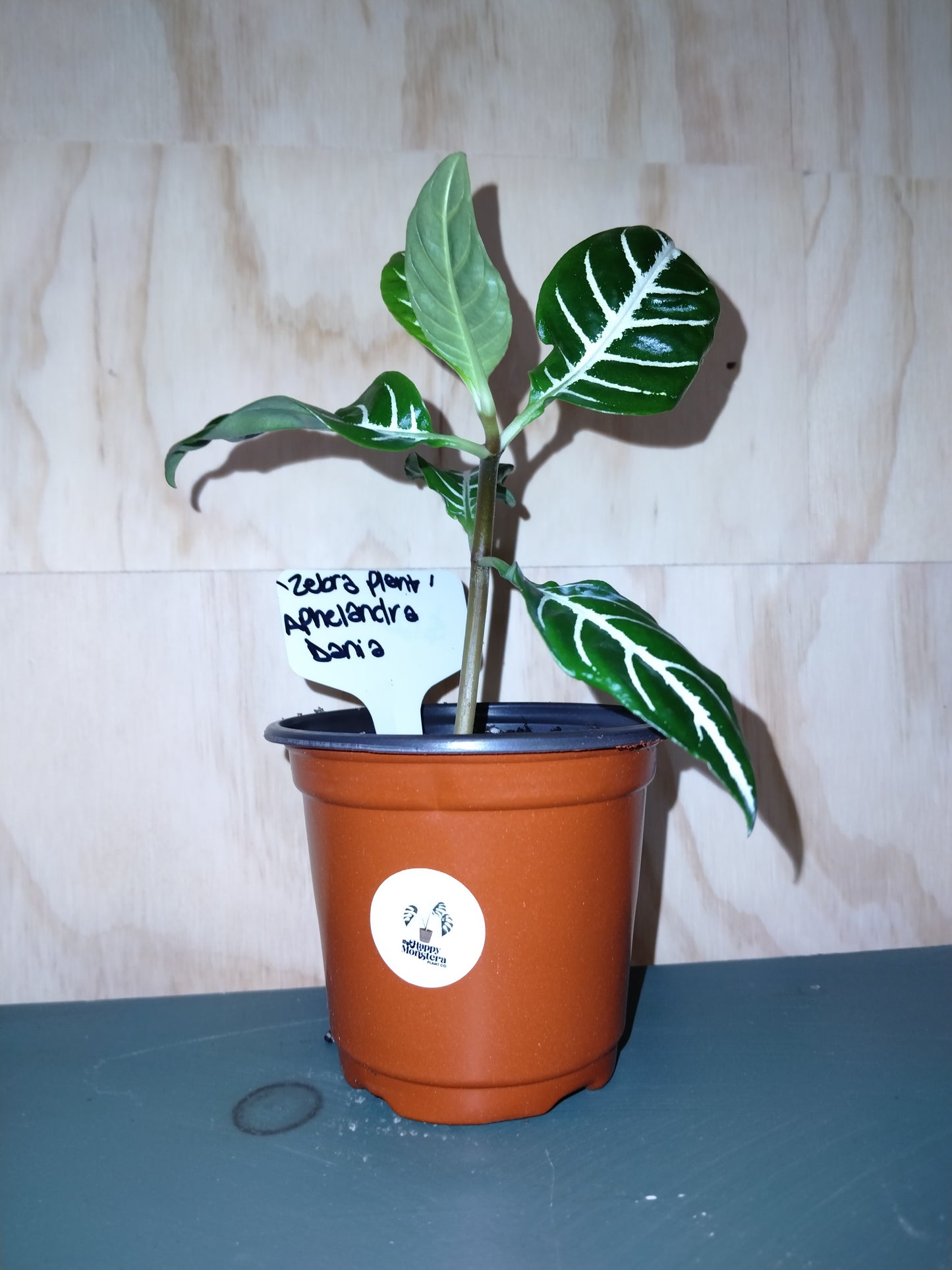The Happy Monstera Plant Co
Zebra plant
Zebra plant
Couldn't load pickup availability
General Description
The Zebra Plant is a striking tropical houseplant known for its bold foliage and occasional bright flowers. Its name comes from the dramatic white veins that contrast sharply with its deep green leaves, giving it a “zebra-like” appearance. Native to Brazil, it thrives in humid, warm environments.
Appearance
-
Leaves: Large, glossy, dark green with prominent white veins. Leaves are ovate and can reach 6–12 inches long.
-
Flowers: Produces yellow bracts with small white tubular flowers, usually in late summer or fall. Flowering indoors can be unpredictable.
-
Size: Typically grows 1–2 feet tall indoors, with a spread of about 1 foot.
Light Requirements
-
Prefers bright, indirect light.
-
Avoid direct sunlight, which can scorch the leaves.
-
Can tolerate lower light but growth will slow and leaves may lose vibrancy.
Watering
-
Keep soil consistently moist but not waterlogged.
-
Water when the top 1–2 inches of soil feel dry.
-
Sensitive to both overwatering and underwatering, which can cause leaf drop.
Humidity & Temperature
-
Humidity: High (60–70%) – thrives in bathrooms or near humidifiers.
-
Temperature: Warm, ideally 65–75°F (18–24°C); avoid drafts or temperatures below 60°F (15°C).
Soil & Fertilization
-
Soil: Well-draining, peat-based potting mix with added perlite.
-
Fertilizer: Feed every 2–4 weeks during the growing season (spring and summer) with a balanced liquid fertilizer diluted to half strength. Reduce feeding in fall/winter.
Pruning & Maintenance
-
Remove yellow or damaged leaves to maintain appearance.
-
Pinch tips to encourage bushier growth.
-
Zebra Plants are deciduous in stress, so leaf drop may occur if care isn’t ideal.
Propagation
-
Typically propagated through stem cuttings in spring or early summer.
-
Root in moist soil or water, keeping high humidity.
Common Issues
-
Leaf drop: Often caused by low humidity, sudden temperature changes, or inconsistent watering.
-
Brown leaf tips: Usually from dry air or over-fertilization.
-
Pests: Susceptible to spider mites, mealybugs, and aphids.
Extra Tips
-
Mist regularly or use a pebble tray to increase humidity.
-
Keep away from cold drafts or air conditioning vents.
-
Flowers are a bonus, but the plant is mainly grown for its striking foliage.
Share

